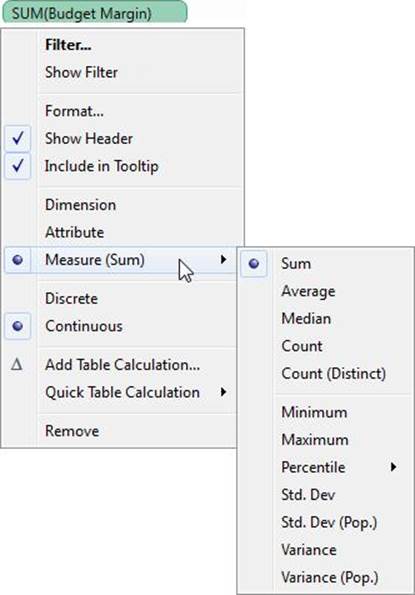How does Tableau know at which level to aggregate values?
A . Values are always aggregated at the level of granularity of the worksheet.
B . Tableau doesn’t aggregate values, we do!
C . Values are always aggregated at the level of the Date Part
D . Aggregation is always done by using Tableau special formulas
Answer: A
Explanation:
In Tableau, you can aggregate measures or dimensions, though it is more common to aggregate measures. Whenever you add a measure to your view, an aggregation is applied to that measure by default. The type of aggregation applied varies depending on the context of the view.
When you add a measure to the view, Tableau automatically aggregates its values. Sum, average, and median are common aggregations; for a complete list, see List of Predefined Aggregations in Tableau. The current aggregation appears as part of the measure’s name in the view. For example, Sales becomes SUM(Sales). Every measure has a default aggregation which is set by Tableau when you connect to a data source. You can view or change the default aggregation for a measure―see Set the Default Aggregation for a Measure.
You can change the aggregation for a measure in the view from its context menu:

Reference: https://help.tableau.com/current/pro/desktop/enus/calculations_aggregation.htm
Latest TDS-C01 Dumps Valid Version with 151 Q&As
Latest And Valid Q&A | Instant Download | Once Fail, Full Refund
